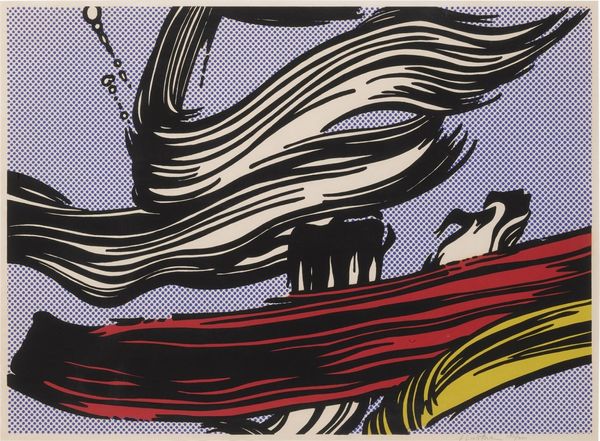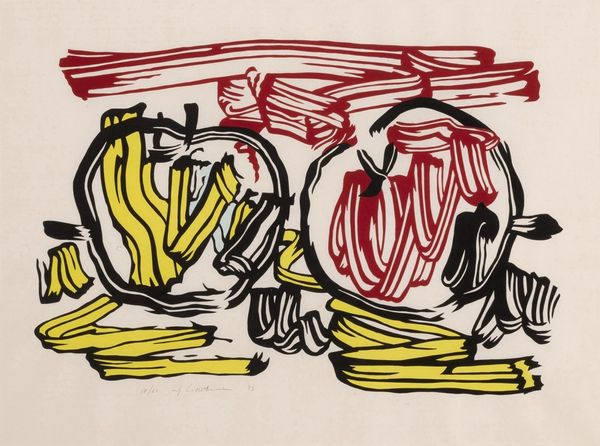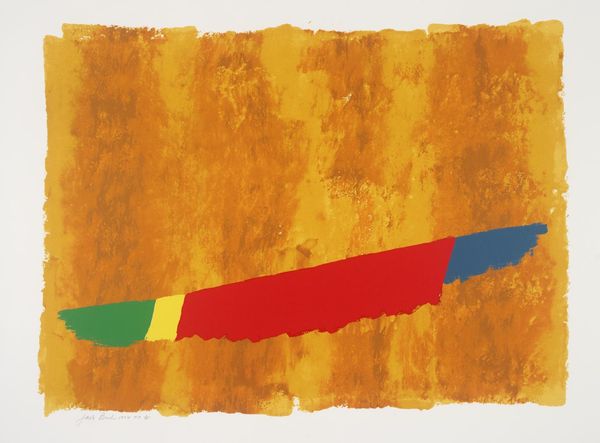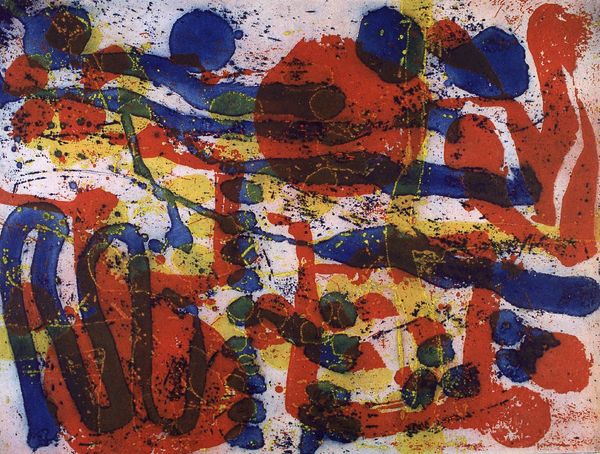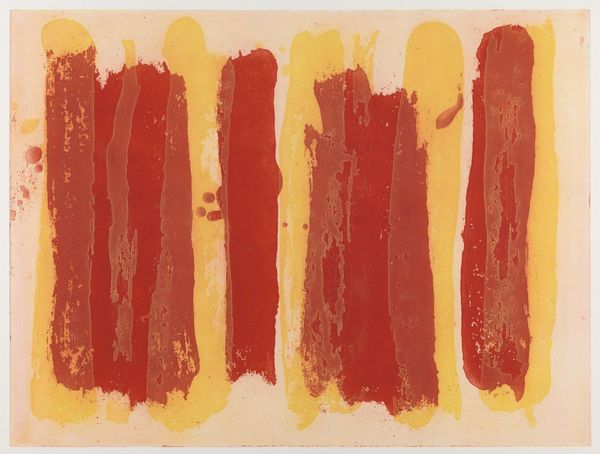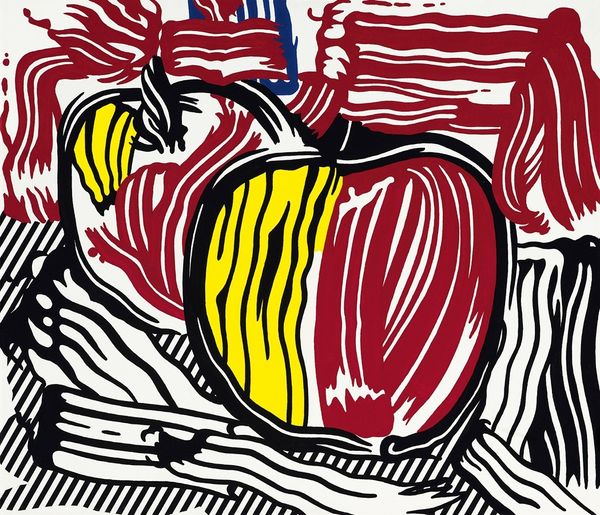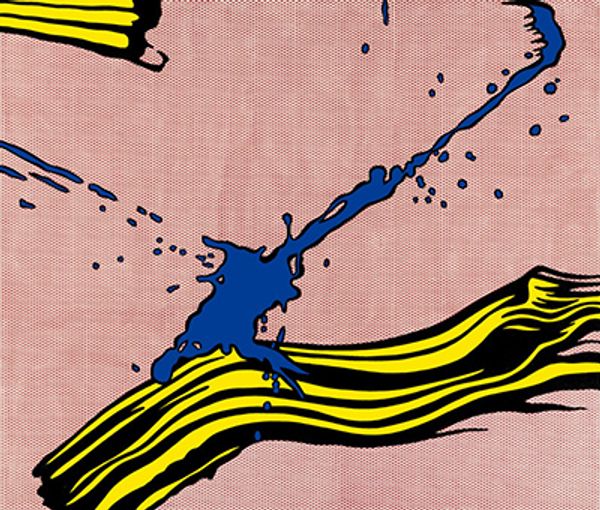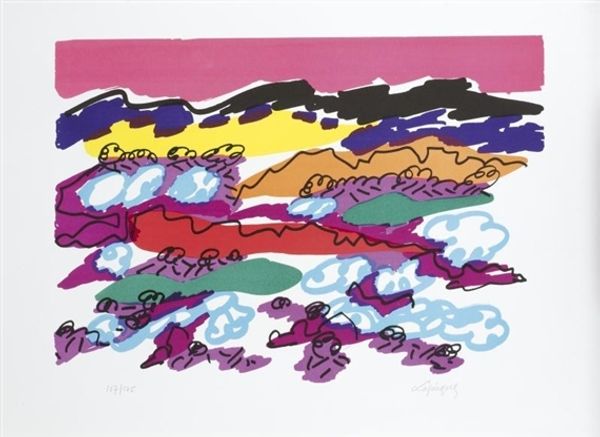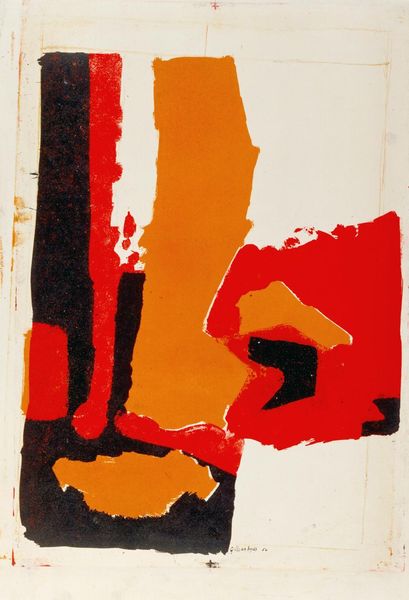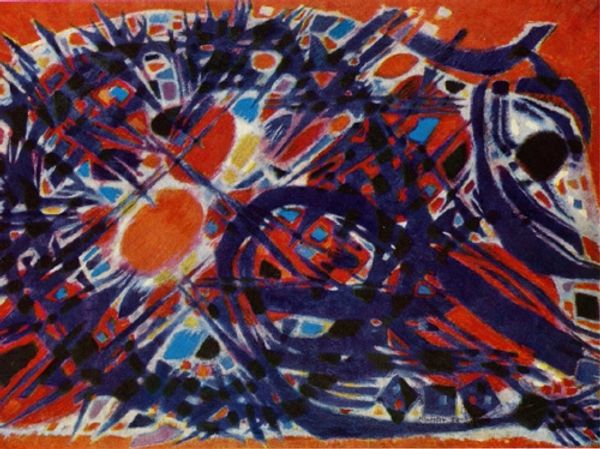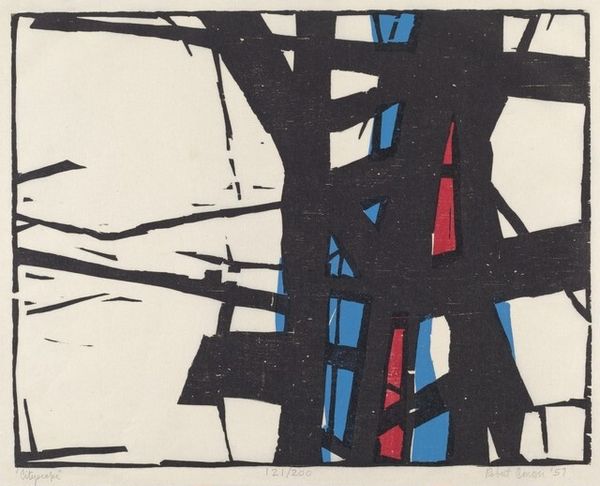
painting, acrylic-paint
#
pop art-esque
#
painting
#
pop art
#
acrylic-paint
#
geometric
#
abstraction
#
pop-art
#
line
#
modernism
Copyright: Roy Lichtenstein,Fair Use
Editor: Here we have Roy Lichtenstein's "Yellow and Red Brushstrokes," made with acrylic paint in 1966. I’m struck by how, even though it depicts something as gestural and spontaneous as brushstrokes, the image feels so controlled and mechanical. What's your take on it? Curator: This piece highlights Lichtenstein's focus on the means of artistic production and consumption. He takes something inherently handmade – the brushstroke, traditionally revered as a sign of artistic genius – and replicates it using industrial printing techniques characteristic of Pop Art. Editor: So it's less about the aesthetic qualities of the brushstrokes and more about how they’re made? Curator: Precisely. The Ben-Day dots, the flat, unmodulated colors, and the bold outlines are all borrowed from commercial printing. He’s using the visual language of mass production to depict what was once considered a very personal, expressive gesture. This challenges the traditional hierarchy that placed painting above commercial art. He questions how labor is valued in art and design. What’s "high art," and what is merely commercial? Editor: So the piece is, in a way, consuming itself by imitating popular styles? The content, brushstrokes, imitates how comics are made, for instance. Curator: Absolutely. The use of commercial processes, such as the Ben-Day dots, positions the work within consumer culture. Think about where the raw materials came from, who made the acrylics, who printed the work, who bought it. How does this relate to questions around the accessibility and ownership of art? Editor: I see. By meticulously replicating the brushstrokes using industrial methods, Lichtenstein is forcing us to think about the process and materials that go into making art. It has truly been enlightening. Curator: Indeed. And hopefully this offers a wider view of materials and making within the broader economic systems that underpin artistic creation and value.
Comments
No comments
Be the first to comment and join the conversation on the ultimate creative platform.

